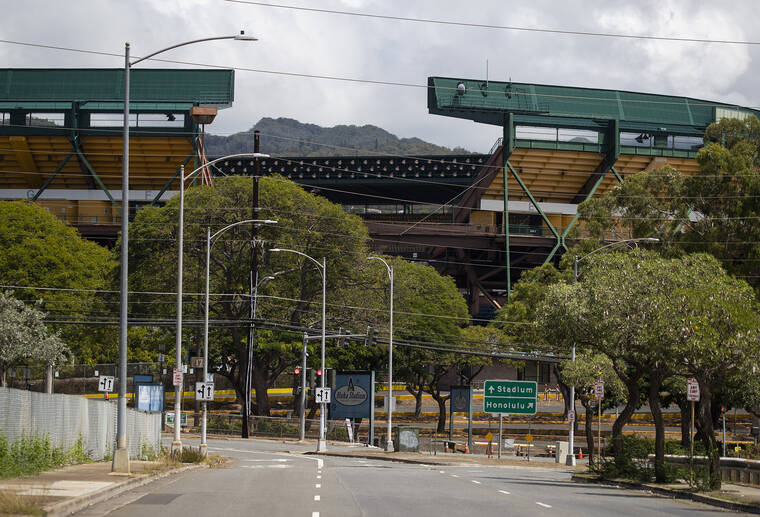David Shapiro: New stadium sees more political games than sports events
3 minute readPublished: Sunday, March 12, 2023 at 10:05 am

Mahalo for reading the Honolulu Star-Advertiser!
You're reading a premium story. Read the full story with our Print & Digital Subscription.
Subscribe Now Read this story for free: Watch an ad or complete a survey
Log In
Already a subscriber? Log in now to continue reading this story.
Activate Digital Account
Print subscriber but without online access? Activate your Digital Account now.
Who knows when the University of Hawaii will ever play football in a new Aloha Stadium, but the tangled project is serving endlessly as a political football.
Gov. Josh Green has switched signals
yet again on a stadium plan thats had more changes than the sputtering UH offense.
Green initially seemed committed to the original plan hatched in the Legislature for a sketchy public-private partnership that would surround the stadium with an entertainment district consisting of hotels, restaurants, retail and housing.
That reversed a decision by his predecessor, Gov. David Ige, to ditch the P3 and build a stand-alone 35,000-seat stadium on a simpler design-build contract, using $350 million appropriated for the project by the Legislature.
But the new governor has been wavering in recent weeks.
In late February he appeared on the Honolulu Star- Advertisers Spotlight Hawaii livestream program and upped the likely cost of the P3 plan to $500 million, and suggested there were differences between the House and Senate on how to proceed.
He also tied stadium construction to the rough treatment of some of his Cabinet nominees in the Senate, saying, I cant build a stadium if I dont have a (Department of Accounting and General Services) director and if I dont have a land use group and if I dont have the people in place on housing.
In their own appearance on Spotlight Hawaii, House Speaker Scott Saiki and Senate President Ron Kouchi admonished Green to build a stadium within the $350 million already appropriated by the Legislature.
The governor then told Honolulu Civil Beat he was dropping the public-private partnership favored by key legislators and proceeding along the lines Ige proposed except the design-build contract hed put out would also include the winning bidder maintaining and managing the new stadium.
Developing the surrounding lands would be put off into the future, and would be geared more toward affordable housing than an entertainment district.
Green said a state-sponsored study showed his plan would save taxpayers $460 million over a 30-year span compared with the original P3.
He warned the stadium under his plan would be smaller than some people want, but at least it will get built.
It drew protests from Sen. Glenn Wakai, a primary sponsor of the P3 when the Legislature concocted it in 2019, who said he doubts $350 million would buy more than 20,000 seats.
Back in 2019, before Wakai and his fellow legislators changed the plan multiple times, he promised a 35,000-seat stadium that would cost taxpayers $300 million and open in time for this years UH football season.
Greens latest plan makes sense for its simplicity but cant really be judged until we see his details and whatever blowback comes from the Legislature over dropping the P3, which lawmakers like because it takes care of development interests that donate generously to their campaigns.
One thing seems clear: A stadium seating only 20,000 or a little more isnt worth $350 million when the 17,000-seat Ching Field on the UH campus could be expanded to that capacity for a fraction of the cost.
Reach David Shapiro at volcanicash@gmail.com.
Previous Story